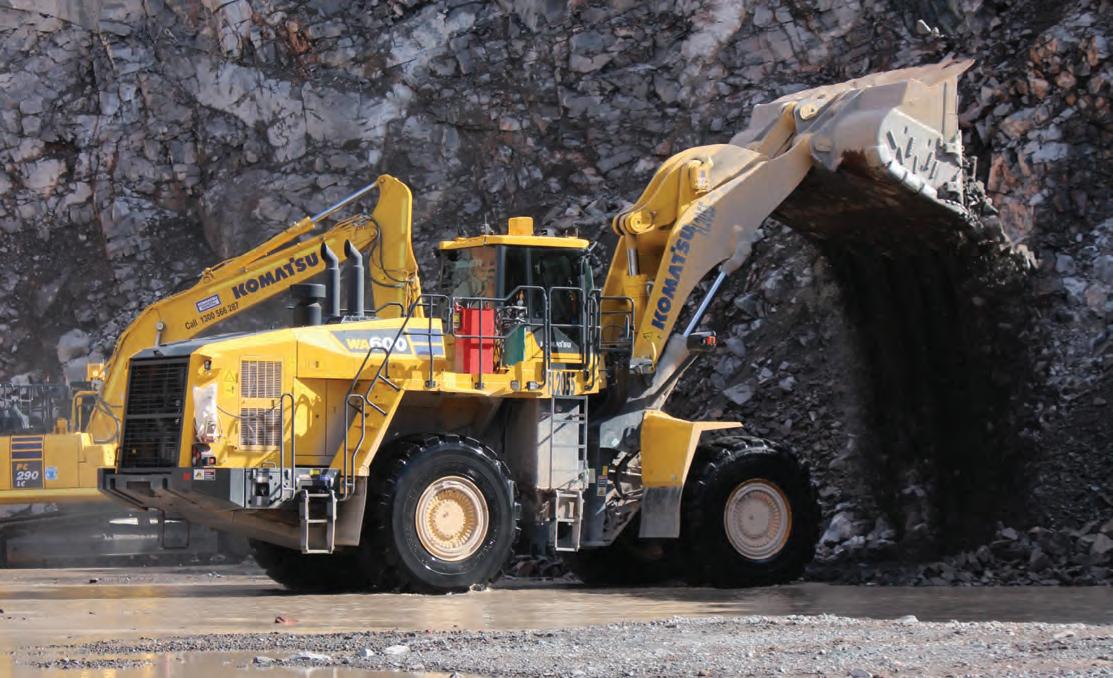
37 minute read
FOUR BECOMES ONE
from Quarry Aug 2020
by Prime Group
HOW FOUR BECAME ONE
To many in the quarrying industry in Victoria and South Australia, the Impact Drill & Blast brand is a familiar name, as is NorthStar Blasting in the Northern Territory, Caruana Blasting in central and northern Queensland and Sequel Drill & Blast in southeast Queensland. These four successful, family-owned, businesses all began providing drilling and blasting services to the quarrying, mining and construction industries in the 1980s and 1990s.
Fast forward to April 2019 when the four became one – Impact Drill & Blast.
This is a story of four successful familyowned drill and blast companies, each with more than 30 years of knowledge and experience, being brought together under one name to provide a fleet of drills, explosives delivery trucks and blast crews anywhere in Australia. This means the days of having to deal with multiple contractors for drill and blast are over. Impact Drill & Blast provides a fully integrated service that is safe, professional and adds value.
Impact has a modern fleet of more than 40 drills, four mobile processing units (MPU) with trailers, a capacity of 21 tonnes of emulsion/ammonium nitrate blends, and two ANFO MPUs.
Since the amalgamation, the new company has embarked on a program of change to provide value to its customers through the introduction of technology in all areas of the business: survey, blast pattern design, drilling, and initiation of explosives. Impact recently took delivery of its first GPS drill from Sandvik, which, coupled with the 3D drone surveying and 3D blast pattern design software means there is no need to do a traditional pattern mark-up. For Impact’s customers, this saves time and increases their productivity.
The coming months will see Impact commission its new emulsion plant in the Northern Territory to service the “top end” of Australia. Impact’s national operations manager Robert Payne said it is “the only emulsion plant in the Northern Territory and being centrally located will provide quarry and mining customers across the top end with a locally produced product and no risk of being cut off from supply during the wet season”.
Impact has formed strategic partnerships with companies that are leaders in their fields
Impact recently took delivery of its first GPS drill rig – the Sandvik DXi900 – which promises ‘no more dots on the ground’.
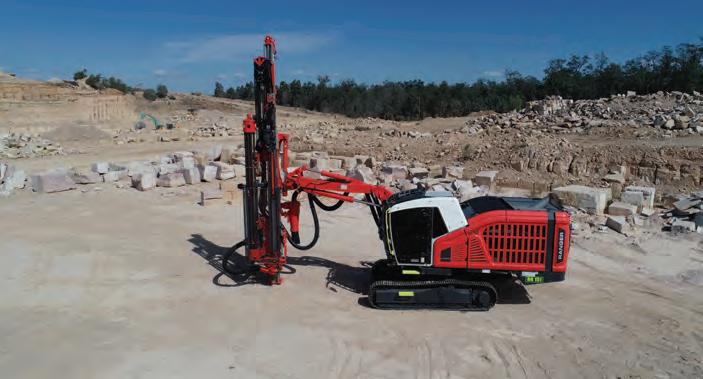
to access the best technology. One of these partnerships is with Davey Bickford ENAEX (DBE), a leader in the development and manufacture of electronic detonators. DBE has worked closely with Impact and its customers to deliver exceptional blasting outcomes.
One of Impact’s quarry customers west of Brisbane required an increase in fines material, reduction in oversize and improvement in its crusher throughput. The quarry has challenging geological conditions of jointed basalt intersected with soft strata bands, which in the past had not favoured the creation of fines. While the introduction of Impact’s RedStar emulsion had given much better results than ANFO, with more fines and less oversize, Impact and DBE believed there was still improvements that could be made using electronic detonators.
Impact designed a staggered blast pattern of 102mm holes loaded with RedStar 60/40 emulsion blend. The DBE engineers worked with Impact’s shotfirer to design an initiation sequence using interactive timing which would use the energy in each hole to work together to create more fines while meeting the environmental requirements for the blast.
The outcome of the blast exceeded the customers’ expectations and continues to this day. The introduction of electronic detonators with the RedStar emulsion reduced oversize to less than two per cent and increased fines significantly to improve crusher throughput by more than 100 tonnes per day. The improved fragmentation also led to the removal of a secondary crusher. Another advantage of the change to electronic detonators was reduced back-break and pre-conditioning of the pit walls, improving safety for everyone in the pit.
In July 2020, Impact commenced drill and blast operations at a central Queensland quarry. The customer wanted suitable material for road base, with additional fines. The customer usually provides the drill and blast parameters but Payne put forward a proposal for Impact to do the drill and blast design. “The customer was sceptical because our designed powder factor was 18 per cent lower than their previous designs,” he said. However, 20 tonnes of RedStar emulsion was loaded in one day and fired using electronic detonators as the initiation system. The customer said it was the best blast they have seen at the quarry.
Impact’s customers are continuing to report reduced downstream costs and improved plant productivity, due to better blasting outcomes.
Safety is the key foundation of the Impact Drill & Blast operations. The move to DBE electronic detonators was as much to do with safety and security of the blast crew and the community as it was for blast outcome. Since March 2020, all blasting in Queensland has used electronic detonators and Impact has committed to using electronics for 100 per cent of its blasting activity by the end of 2020. •
MARK BEVAN: GETTING THE MOST OUT OF YOUR JOB
With a quarrying career spanning three decades, Mark Bevan has truly done it all. The Truro local has continued his path of industry growth since first receiving the 2018 Quarry Operator of the Year Award. Nickolas Zakharia reports.
It is often said that a positive life starts with enjoying what you do for work. After all, those who enjoy their jobs generally go on to become more successful in the long run.
Mark Bevan has just started a new role as quarry manager at Hallett Resources in Truro, South Australia. The 48-year old has an extensive history in the quarrying industry that goes as far back as 1997. To this day, Mark has not lost his passion for an industry that is rife in opportunity.
“I love it, I do love it,” he told Quarry. “I really like the variety and I do still to this day. I’ll be doing dust monitors one minute, entering the production figures another minute, and then checking on crushing systems like I was just doing with a belt weigher. I get a real kick out of it because it’s so varied.”
A LIFE IN QUARRYING Mark first started his quarrying career at Linke Contracting in the 1990s. He operated machinery including scrapers, dozers, wheel loaders and trucks.
During his time at Linke Contracting, Mark worked at the gypsum quarry (amongst other sites) in Blanchetown, South Australia. Gypsum, a product commonly used in the agricultural industry, started Mark’s early understanding of sizing in regards to aggregates and rubbles.
“I was quite lucky because they [Linke] had a quite a large civil side doing roadways, wineries, things like that – and they also had a contract mining business,” Mark reflected. “I was lucky that I made myself learn everything so I could swap and change.”
Mark remained at Linke Contracting for 10 years and then moved to Penrice Quarry & Mineral in 2007, located in South Australia’s Barossa Valley. While at Penrice, he worked in a limestone quarry where he continued to grow his career, becoming a shift supervisor in the quarry’s production area.
Inclined to learn as much as possible, Mark completed a self-funded Certificate IV in
Mark Bevan (right) received the Quarry Operator of the Year Award from IQA Past President Clayton Hill in September 2018.
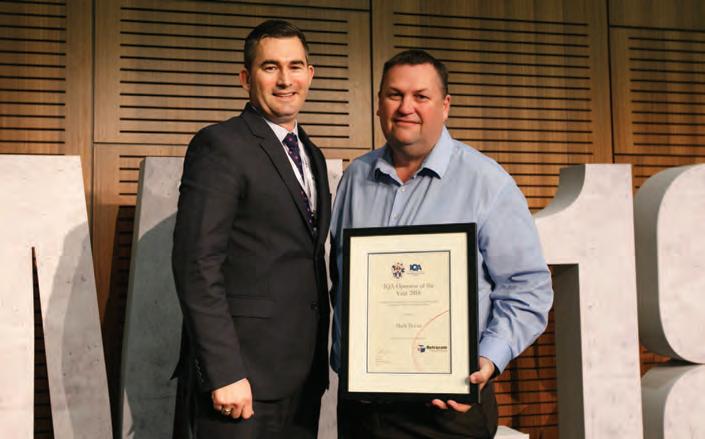
Extractive industries at Box Hill TAFE while still working at Penrice. It was here that he met Randy Klemm, someone who would go on to become his mentor.
“An amusing fact was that Mark was supposed to do an end of course presentation that was only meant to go for 20 minutes but – including question time – lasted for one hour, such is his enthusiasm for the industry,” Klemm said in an IQA Awards nomination submission for Mark.
After a brief move to mining in Western Australia in 2011, Mark learnt the skills needed for weighbridge operations and blasting. He then decided to return to his studies at PolytechnicWA to complete his Quarry Manager’s Certificate.
He took his knowledge to Seelander Quarries where he worked as Klemm’s second-in-command. He was still based there when he received the IQA’s Quarry Operator of the Year award in 2018.
With a constant drive to learn and experience more, Mark has most recently worked as a quarry manager at Boral’s Whyalla Quarry before moving closer to his family in Truro, where he now works for Hallett Resources.
FROM OPERATOR TO MANAGER Since Mark started his pursuit to become a quarry manager with his certificate at PolytechnicWA, the transition from quarry operator to manager has been significant.
Winning the Sydenham Hill Quarry Operator of the Year Award, sponsored by Retracom, brought attention towards several areas that Mark specialised in.
“That was everything from weighbridge operations through to laboratory skills, like taking samples, checking the PSDs on a shaker, dealing with customers and clients – and also suppliers and contractors about blast environments,” he said.
“At different times in my career I’ve been able to do the whole gamut of quarry
Mark Bevan has used a wide range of quarrying equipment over his 20-plus years working in quarries.

operations, from operating small five-tonne - 125-tonne diggers to WA 900-wheel loaders. I’ve also been able to do crushing, pug milling and screening – all of those different types of operations I’ve done at different times of my career, I was very lucky.”
Mark’s commendable focus towards his craft has earned him many successes in his 23-year-long career. He believes there is always room to improve and his move to quarry manager has raised some new challenges to the diverse working environment that he thrives in.
“It’s a huge jump,” he said. “The hardest part of my job is how to deal with staff and just people in general. I’m not naturally gifted. I’m not one for having a huge presence about me. I have to work at everything I do – it doesn’t come naturally to me.
“People management is the biggest one for me and the financial side of things too was also a big thing for me.”
WINNING THE AWARD Mark has been an active technical member of the IQA for more than a decade.
With a keen interest in expanding his industry wisdom, he paid to visit New Zealand for an IQA study tour and visited Toowoomba for the first time in 2017 for the IQA’s national conference.
“I had never been to Toowoomba in Queensland the first-time round,” he said. “The study tour gave me an opportunity to go and see a different country as well as being around like-minded people enjoying what I do – crushing and screening and having a look at all the aspects of the quarrying over in New Zealand on the North Island.”
Mark Bevan first started his career in the quarrying industry in 1997 and still loves his job today.
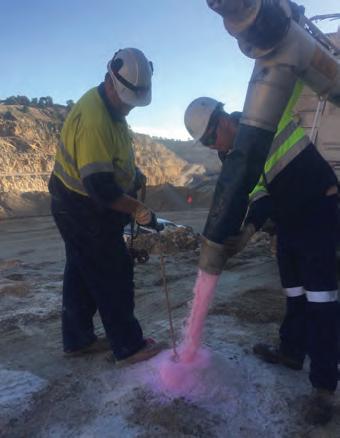
While at Seelander Quarries, Mark was actually helping Randy Klemm prepare an application for the 2017 awards.
“It was raining quite heavily at the quarry that day so I sat down with my mentor, Randy Klemm, who I worked with at Penrice and ended up working for him at Seelander Quarries,” Mark recalled.
“I started trying to get information together to put a submission in for him for Quarry Manager of the Year, and in the process, we got a heap of information for me together and we ended up going with the one that I did.”
As runner-up in the IQA’s 2017 Quarry Operator of the Year Award, Mark decided to have another shot a year later – which he ended up winning. “The beauty of it was it gave me another chance,” he said.
After winning the award in 2018, Mark went to Las Vegas’ 2020 CONEXPO/CONAGG in the United States, prior to the travel impacts of COVID-19 this year.
“I never realised how many different products are out there,” he said. “Everything from surveying through to environmental resources through to simple things like bucket teeth. They had whole batching plants set up, whole crushers set up. It was just mind-blowing, it really was.”
SAFETY FIRST CONEXPO also opened Mark’s eyes to another nation’s industry safety standards. He believes safety in Australia’s quarrying industry is moving in the right direction.
“I think the awareness is there now – and it has been for a while,” he said. “People want to go home in the same way they went to work. Managers too want their staff to get
After winning the IQA Quarry Operator of the Year Award, Mark and his wife had the chance to attend CONEXPO this year.

home at the end of the day – they don’t want people to get injured on site.”
Mark said his role as a quarry manager aims to minimise risks and strike a balance between production and safety.
“Because it is a high-risk environment, there will always be dangers, but it’s about minimising the risks,” he said. “From working out of a loader bucket when I first started, to moving track loaders around on the back of rock wagons, to now where everything is risk assessed,” Mark reflected.
“It was amazing to see that when I want to CONEXPO, the Americans were still behind us safety-wise. There is just a lot of more pinch points in their conveyors and different parts of machinery – whereas everything is risk assessed here. You’re looking for hazard IDs – it’s completely changed. It is a much safer industry because of it.”
Now working for Hallett Resources, Mark said he has been looking forward to being closer to his family, who have supported him through times where has worked hundreds of kilometres away.
“With Hallett, it’s about building a new team and being close to my family,” he said. “My kids are getting older too – I’ve got three kids; our daughter is 16 and the twin boys who are 14 at this point. It’s about spending some time with them.
“Previously, I got a day to a day and a half at home per week and the rest of the time I lived away. By working here in Truro, the quarry is literally five minutes from home. It’s unbelievable.” For more information about the IQA Awards, which will reopen for submissions and nominations in 2021, visit quarry.com.au •
DEVELOPING KEY ACCOUNTS FOR NEW AND EXISTING CUSTOMERS
Earlier this year, Mike Cameron outlined how key account planning could assist businesses to achieve new products and/or service solutions sales. He now turns his attention to how businesses can develop and finetune those Key Account Plans based on the attributes of the buyers they are approaching.
The previous article laid the foundation for understanding the importance of a good sales strategy – namely, to set yourself up in the right position, to be in the right place, with the right people, at the right time, with the right solution so that you can make the right tactical presentation to achieve your sales objective. However, to ensure a mutually beneficial transaction where both buyer and seller achieve gains, salespeople must create a framework through Key Account Plans that fosters a win-win situation and manages every sales objective as a joint venture.
A Key Account Plan (KAP) is required for those prospects that are most likely to buy from you and those who provide you and your organisation with the highest value return on your effort. These are your High Value Prospects (HVPs). A KAP has six important components (Table 1).
Effective key account management is based upon establishing and maintaining a synergistic relationship with your customers. Dr Stephen R Covey in his book The Seven Habits of Highly Effective People defined “synergy” as “the principle of creative co-operation” and he stated that the development of an effective partnering relationship is dependent upon: • Mutual respect. • Integrity. • Trust. • Comparable cultures and values. • Openness. • Communication.
The selection of sales professionals to develop effective KAPs is critical with the following diagram possibly assisting you to identify the key effectiveness issues facing your client relationship management planning.
The process of creating and managing a KAP has seven steps which can be clearly identified in the following diagram: -
Figure 1. The seven steps in the Key Account Planning process.
1
2
3
4
5
6 Objective
Strategic focus
Target contacts
Core strategy
Competitors’ reaction
Action steps A clear, specific and realistic statement (a SMART goal) of the sales outcome to be achieved for this particular customer.
How broadly will this sales objective be achieved?
Whom will you need to influence in order to achieve this sale objective?
The specific benefits that you will promote so that this prospect/customer will use your organisation rather than your competitors’.
What are your competitors likely to do?
What must be done to achieve your sales objective, by whom and by when?
Table 1. The six core elements of a Key Account Plan.
Table 2. A sales relationship diagram.
The seven key steps are (as outlined in Figure 1) are: Step 1 Decide what you are selling. • Understand your sales objective. Step 2 Test your position and identify buyers. • Understand your customer base. • Understand your customer’s organisational chart. • Identify buyers. Step 3 Rate and evaluate your buyers. • Buyers’ roles.
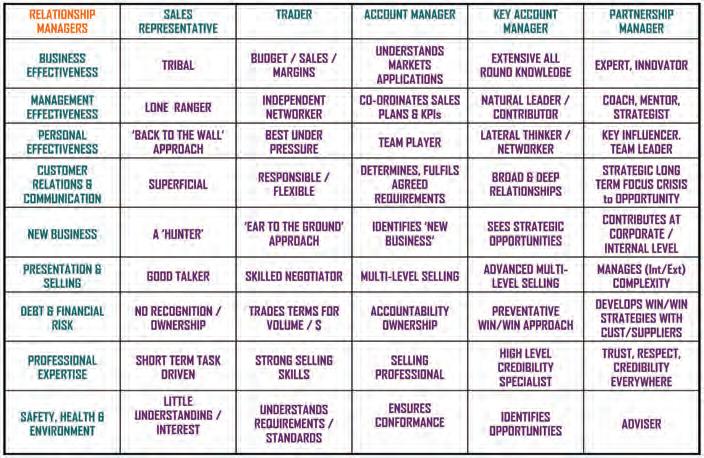
• Buyers’ influence. • Interest in your sales objective. Step 4 Identify strengths, weaknesses, opportunities and threats • Review alternative positions. Step 5 Create an Action Plan • Draft and implement SMART action steps. Step 6 Close the deal. • Ensure that paperwork and your process is
“painless”. Step 7 Monitor and seek feedback.
OVERVIEW OF THE KEY ACCOUNT MANAGEMENT PROCESS
• Monitor delivery. • Check that delivery meets (or exceeds) the promise. • Seek feedback from your customer’s buyers. • Review future business opportunities (eg in a Business Review and Development
Meeting – or BRAD meeting). • Nurture the relationship.
WHAT ARE YOU SELLING? Positioning is a key to success in sales. Determining where you are currently, deciding where you want to be and then planning on how to get there is a strategic evaluation process that you must learn to master if you wish to stay ahead of the game in today’s fast-paced and high demand business environment.
Understanding how to create, manage and maintain an effective KAP, for each of your target customers and future prospects, is the first stage in assisting you to establish a rewarding, more effective sales process.
You first need to review your list of existing customers and current prospects and then create a database with an individual sales objective for each of your target accounts.
Once you have drafted a sales objective statement for one of your target accounts, it is important that you check how you, others within the sales team and key stakeholders within your business, feel about this specific sales goal, prior to it being placed into this particular customer’s KAP. However, regardless of whether you have considered a number of alternative options, it is important to also appreciate that your initial sales objective statement really only represents your company’s preferred option – which has yet to be tested during upcoming meetings and discussions with your customer’s buyers.
IDENTIFYING BUYERS IN YOUR CUSTOMER’S BUSINESS Spending the time you have available with the right customers (ie those who will give you the greatest return on your time and investment) obviously makes a lot of sense. This requires a combination of territory design and account prioritisation.
Territory design is used here in a broader sense than just the geographic one. It is very closely aligned with the concept of client segmentation but the approach you adopt from a sales point of view will frequently depend upon whatever you perceive to be the most significant differences between your customers, eg: • If customers are generally locality-based, within specific regions, then establishing geographically-based territories may be
Figure 1. The seven steps in the Key Account Planning process.

the most appropriate sales management structure – depending upon the required call frequency. This is also the case when prospecting or lead generation requires a strong local networking presence. • Where there are significant differences between the needs of customers within different industries, and the salespeople are expected to have skills and/or experience matched to those industries, it frequently makes sense to use vertical market-based territories. • If your customers require personalised support or service different to that expected in the above models and depending upon the size of their account, then the best approach may be to allocate territories based on account size (or the complexity of the sale proposal).
Of course, in many companies, there may be a need for a multi-dimensional approach (Figure 2) to territory design, as shown below:
Prior to the allocation of a particular type of sales territory to any given salesperson, the choice should satisfy several criteria: • The territory should match the knowledge, skills and personality type of the salesperson involved. • It should provide a fair level of potential business so that each salesperson is able to make a living as well as to ensure that no territories go under-served. • It should be designed with reasonable travel demands or acceptable ease of access. • Taken together, it is obvious that whichever territory structure(s) you select you will need to cover your whole target market, or you may even need to reappraise your overall resourcing levels and review profitability.
Even with a perfect territory design, however, each salesperson will still need to prioritise their activities by account. The
Figure 2. The multi-dimensional approach to territory design.
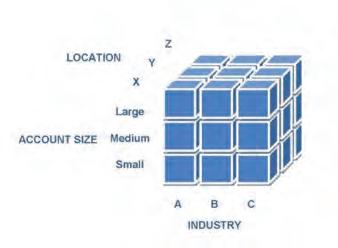
old 80/20 rule (Figure 3) often applies – 80 per cent of your revenue will come from 20 per cent of your clients. So, it is critical that salespeople don’t waste their time on deals that won’t deliver.
THE CUSTOMER’S ORGANIGRAM The management of a KAP requires you to determine who the people are within your customer’s company, who will influence the buying decision and/or have an ability to impact (either positively or negatively) upon the outcome of your sale objective.
There is usually more than one person who has to give a recommendation, technical input, user evaluation or their approval before the sale can proceed.
An inability to identify the people involved in a customer’s decision-making process, the role they will/do play, and their personal and/or professional motivation is one of the major reasons why salespeople lose deals. It is critical that you, as a salesperson, identify all the players, understand their roles and the influence that they have on the buying decision. We will call these people buyers.
The Organigram (Figure 4) outlines four types of buyer: 1. Economic decision-maker (with a large dollar value and/or complex sales there may be an additional buyer in the equation, The Ultimate
Decision-maker, eg a board of directors). 2. End users. 3. Technical decision-makers. 4. Advocates.
The economic decision-maker is the person who actually signs off on the deal. This person often doesn’t get involved in the detailed evaluation process but invariably they will want to know whether your product, service or solution will be good for the company’s bottom line. Even if everyone else is keen on the deal, this person has the final veto – and can say “Yes” or “No”. There may be an ultimate decision-maker, especially when very large dollars are involved, or the impact of the purchasing decision is complex or high risk.
The end user is the person (or people) who will actually use (or benefit from) the product, service or solution that you are selling. There are frequently multiples of this character and, while they don’t sign off on the deal, they each will have an opinion about your offering. Whether they will use or supervise the use of your product or service, each end user will make judgements about the potential impact on their job or work-related performance. This means that their personal success is directly tied to the success of your solution.
There can also be multiples of the technical decision-maker. This person (or persons) is used as the “filter” and frequently will attempt to test out the quality, perceived value and/or validity of your solution or simply to screen out salespeople on technicalities. Their focus is on the product, service or solution and determining how well it meets specifications and to check that it meets with industry and/or company standards. While this person (or persons) cannot give a final “Yes”, they can certainly recommend a final “No”.
An advocate is the person who can or does lead you to other buyers who you cannot reach without their guidance or support. In fact, you may not even be aware of these additional buyers’ existence. An advocate can and/or will provide you with information that would be difficult to obtain, such as advising on the evaluation process that was used in the past for similar projects that received approval. They can identify difficult and/or challenging individuals and advise on the importance or relevance of the project to their company’s bottom line or strategic direction. They understand who will be impacted by your solution, what the current or potential business issues are that need to be addressed, what language you need to avoid and what not to say. An advocate is the person who wants you to make the sale and therefore will guide you to the best of their ability and role placement.
There are some key points and
Figure 3. The 80/20 effect.
learning experiences: • It is critical that you identify and qualify all the people involved in influencing the buying decision and appreciate how they fit into one of the four buyer roles. An inability to recognise this important aspect of managing a Key Account, and implement appropriate actions, is the most frequent cause for losing a sale. In any event, it is likely to slow down the sales process or impact upon the determination of the overall viability of this particular business opportunity. • It is critical that you have to meet with all the buyers when the dollar value of the sale is large, the project is complex, or your customer perceives a high risk associated with “failure” due to the purchasing decision.
The bigger the cost of the transaction, the deeper the relationship you must have with the buyers in order to position yourself and/ or your company for the win. The “you” refers to yourself, as the key account manager, one of your teammates or a senior member of the management team; obviously, this becomes more critical when the sale’s value is high, and the solution is complex. • It is important to match people from within your management team with those in your customer’s business in relation to their management seniority and/or authority level.
Obviously, the larger the transactional value, complexity or risk, the more senior you should map your management team with theirs.
THE ECONOMIC DECISION-MAKER The economic decision-maker is the person who gives final approval to buy your product, service or solution. The role of this buyer is to release the funds to buy. This buyer is critical to the sale. The focus for them is not price but price performance. There is normally only one economic decision-maker per sale, apart from a few exceptions when an “ultimate economic decision-maker” may be the key player (this role may be played by a board, a selection committee or another body acting as a single entity. However, even in these bodies, there is someone who is more equal than the others).

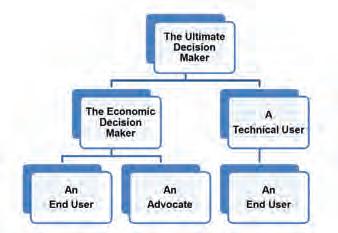
Figure 4. A customer organigram outlines the types of buyers.
How to find the economic decision-maker: • When the dollar value of the sale is larger than “normal”, the further up the economic decision-maker will be within your customer’s organisation. • Purchasing authority levels are tightened when the economic climate is tight, so the person usually making this decision will probably have to seek approval higher up the client’s organisation. • Past operational experience with you and your company may allow the decision to be made at a lower level – especially when you already have a successful “track record”. • Although the decision may be made at a lower level, there are two key points to keep in mind: • The greater the risk and/or lack of past operational experience, the higher up the decision will be made. • The more experience that your customer has had with your product or service (even when it has been well received), the more they may feel obliged to ask some competitors to bid (in order to test out alternative solutions or to exert some pricing pressure on you).
END USERS The end users make judgements about the impact of the product, service or solution on their jobs. “On their jobs” is the key phrase – they are concerned about everyday operations.
The end users will ask you about the reliability of the product, service or solution. They will often look for a demonstration, an inspection of
a similar project or an opportunity to discuss concerns with a number of referees. They will frequently review ease of operation, maintenance and spares availability or similar inquiries. They will want to understand how it works or what changes your solution will make to their department and what impact it may have on safety, maintenance and staff morale.
An office-bound manager or others within the department may play the role of end user. However, there will always be at least one person who will play this role and, since the end users will live with your solution, and their daily success is linked to it, they are a key to the success of your sales offering.
TECHNICAL DECISION-MAKERS The technical decision-makers are frequently detail-focused, questioning and sometimes they may appear difficult to deal with. However, they want to ensure that your solution meets the specifications and standards that the company requires. They are usually aware of the purchasing limits, budgeting constraints, technical compliance, technical specifications and, of course, legal or contractual terms or other metrics, measures and criteria of the project or buying decision.
The technical decision-maker may come from purchasing, legal, finance, IT, production or other areas of the business, with the term “technical” referring to their professional or specialist expertise.
People playing the role of the technical decision-maker are usually harder to identify than those in other buyer roles. One reason for this difficulty is that a customer or prospect may use a consultant or outside agency to act as their technical decision-maker. If this person or company doesn’t want you or your solution, they can easily use standards or specifications to frustrate your efforts or, in the worst case, to block your entire sale.
An economic decision-maker may give the technical decision-maker semi-final authority by saying “you decide how this will work and what we should do”, resulting in that person acting as though they are the person with the final buying authority when obviously they are not.
ADVOCATES Information and/or feedback from your advocate(s) is a key to any sale. You must develop at least one advocate (although it is usual to have a number of them, whenever possible) who can provide you with insight and guidance to the inner workings of your customer’s business, especially as that may relate to your sales objective.
An advocate can: • Clarify and validate your sales objective. • Identify and/or assist you to meet the people who are filling the other buyer roles. • Assess the situation so that you are most effectively positioned with each of those people.
What an advocate cannot do is guarantee you will get the order.
You must be prepared to discuss and/or expand on your offering with all your buyers, as and when appropriate, not just selecting to sell only to the people you know or with whom you feel comfortable.
The best advocates are: • Those working for your client or prospect. • Someone who is credible and knows the client organisation. • In terms of credibility, if you can turn your economic decision-maker into your advocate, then you have the best solution. • Someone who appreciates, or people who want, your solution.
Advocates also frequently exist within your own company or industry networks or other suppliers.
The first three buyer roles exist whereas advocates needs to be developed. IDENTIFYING ALL YOUR BUYERS Write down the names of the people in each role – but small enough to allow you to add further information about each buyer as you gain clarity about their role and influence. The wrong way to do this is to simply list all the people you are calling on and fit them into the four boxes. Do not force-fit contacts into these roles, eg: ECONOMIC: END USERS:
In a future article, Releases $$$ Judge impact on job we will review the TECHNICAL: ADVOCATES: next steps in the KAP Screens out Offer guidance process. This will proposals include identifying the strengths and Table 3. A buyers’ chart. weaknesses of buyers, developing a SWOT analysis, and understanding the concept of “stop signs” in the evaluation process. •
Mike Cameron is an IQA member and the principal of Strategically Yours. Visit strategically.com.au
REFERENCES & FURTHER READING 1 Cameron M. Key account planning: The profile of an ‘ideal’ customer? In: Quarry 28 (04); April 2020: 36-39. 2 Covey SR. The Seven Habits of Highly Effective People. Free Press, 1989.

IQA NEWS
BRANCH COMMITTEE ROLES OFFER OPPORTUNITIES FOR GROWTH, NETWORKING, LEADERSHIP SKILLS
A South Australian Young Members Network meeting in 2018. Being involved in a branch committee will mean you’ll know what’s happening before everybody else.
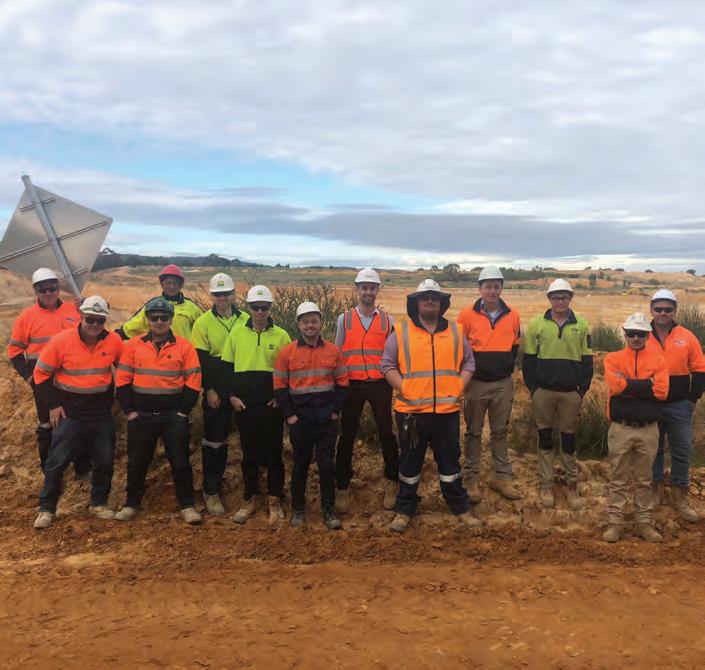
The new committee members will join the IQA at an exciting time as it works to support local branch events and implement the five-year strategic plan recently developed this year.
The IQA is committed to ensuring it continues to be a strong, attractive and relevant professional body, with an emphasis on networking, education and development for all of its members. If you share our drive and passion we want to hear from you.
Committee roles offer fantastic opportunities for individuals to develop leadership and strategic skills, working alongside fellow IQA members. Being a committee member is extremely rewarding and will grow your networks, support your personal brand and develop new skills in governance, leadership and negotiation. IQA committee members gain a lot through the ideas they share and the contacts they make across the quarrying and associated industries.
Being an active committee member is not onerous. Each branch committee is fully supported by a highly capable team of IQA staff. As a committee member, you will attend regular meetings and share ideas on what events/ education is needed locally.
Expressions of Interest (EoIs) are invited from Members or Fellows of the IQA who can bring some of the following attributes: • Knowledge of good governance principles. • Knowledge of the education sector and the work of other professional bodies. • An international perspective. • Experience of growing and developing a business, finance and auditing. • Strategic development and planning skills. • Communications and public relations experience.
For more information on branch committee vacancies and roles, contact Lisa Stromborg, tel 0403 291 996 or email qld-admin@quarry.com.au
10 REASONS TO BECOME AN IQA COMMITTEE MEMBER
PASSION – Because you are passionate about your industry and the IQA. Help the IQA reach its goals. DEVELOPMENT – Committee participation leads to uncovering business insights you can utilise in your professional and personal development. You will develop a whole new skillset and improve skills you didn’t realise you had. Whether it’s chairing a meeting, coaching or mentoring or running an event, you will be able to add to your skill set. PERSONAL BRAND BUILDING – Build your personal brand by getting involved. It’s not about who you know anymore – it’s about who knows you! It also looks amazing on your CV. Employers look for these types of roles and the skills they show that you’ve developed on applications. They are a proven catalyst for job prospects. LEADERSHIP OPPORTUNITIES AND EXPERIENCE – Experience how the IQA works and the effort that goes into growing the Institute. Through active participation on a committee, you will have the opportunity to someday become a board member. RELATIONSHIPS/NETWORKING –Joining the IQA committee helps build stronger relationships with like-minded people. TO LEAD THE FUN – As an IQA committee member, you are involved in organising activities and events to bring members together. There’s no better feeling than seeing your idea or event come to life. PAY IT FORWARD – Give back to your industry by making a difference in committee involvement. CONTRIBUTION – Contribute to the growth and future success of the IQA. GREATNESS – A chance for people to see you in action – and to show people how great you are! INSIDER SNEAK PEAKS – You’ll know what’s happening before everyone else.
The Institute of Quarrying Australia
A SOBER REMINDER OF WHAT MUST BE DONE TO IMPROVE SAFETY
On 24 June, the IQA hosted a webinar by Dr Sean Brady to discuss the key findings of a report he prepared that investigated all fatal accidents in Queensland mines and quarries from 2000 to 2019.
Although the report was commissioned by the Queensland Department of Natural Resources, Mines and Energy, the webinar was extremely well attended by members of the industry, suppliers, regulators and numerous government departments across Australia. The depth and breadth of interest in the topic is a sober reminder of what we must do as an industry to improve safety. It is multi-faceted and involves people.
Dr Brady outlined that: • Occurrence of fatalities is cyclical and linked to vigilance. • Supervision and safety are key factors in reducing fatalities. • Industry needs to change its mindset from one of
“expectancy” to nonacceptance or zero tolerance.
More about Dr Brady’s thoughts and findings can be found in the feature starting on page 32.
COVID-19 restrictions continue to be ever changing. The IQA is aligning activity with state requirements and where permissible will be resuming face to face events. Several branches will be holding their annual general meetings (AGMs) aligned to a dinner meeting, while other branches will be restricted to AGMs via video conference.
Regardless of how the AGM is held, establishing a strong local committee is extremely important. We have recently promoted the value of being involved in a committee and encourage people to nominate (see opposite page). Being a UPCOMING EDUCATION OPPORTUNITIES The following workshops and webinars have now been confirmed: • 12 August 2020 – New South Wales
Quarries – Compliance with the Mining Act 1992 (NSW) (webinar) • August (Date TBC) - Industrial
Manslaughter (webinar) • 24 September 2020 – Learning from
Disasters (online workshop) • 28 October 2020 – Learning from
Disasters (online workshop)
A fully online course – Effective Risk Management – is also available on request. For more information, tel 02 9484 0577 or email admin@quarry.com.au
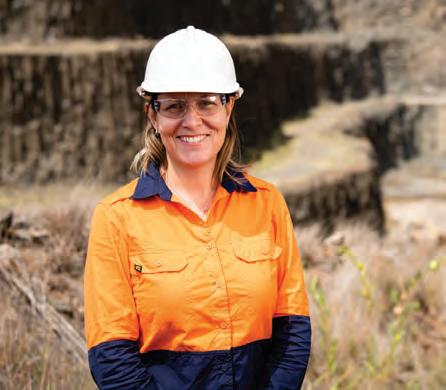
committee member is extremely rewarding and will grow your networks, develop leadership and governance skills and share ideas and innovation. If you would like to be involved, please contact the IQA.
The IQA’s AGM will be held via video conference on 29 September, 2020 from 5:00pm. This is the first time the AGM will be held via video conference. Notices will be sent to all members and this year the virtual platform provides a great opportunity for all
KYLIE FAHEY CEO Institute of Quarrying Australia
IQA BRANCH ANNUAL GENERAL MEETINGS
BRANCH DATE CONFIRMED
IOQ ACT
5pm, 29 Aug (Video conference)
TBA
NSW Central West Hunter Illawarra Northern Region Nth QLD (inc Cairns)
Northern Territory
QLD & Cntrl QLD
SA TAS Vic Sub Branch VIC WA TBA TBA TBA TBA TBA
10am, 26 Aug, Rowes Bay Golf Club, Townsville
10am, 10 Sept (Venue TBA)
6pm, 25 Aug, Brisbane Racing Club, Doomben Racecourse
TBA TBA
1.30pm, 13 Aug (Video conference) 4pm, 18 Aug (Venue TBA) TBA
members to attend. IQA NEW MEMBERS
GRADE Member Associate Associate Associate Associate Associate Associate Associate Associate Associate Member Member Member Member Member Member Member Member Student T/ Member T/Member T/Member NAME Stephen Barnett Tracey Tjahjadi Ethan Pettiford Hayley Staier Andrew Skinner Joel Fleming Jason Reckless Paul Langan Charlie Pocock Jamie Hannah Sean Taylor Brendan Kiley Jason Sweeney Catherine De Lorenzo Keiran Whitlock Rohan Cox Scott Hern Marie McDonald Scott Whittaker Phillip Pallisier Rob Domotor Matt Anderson BRANCH NSW NSW NSW NSW NSW NSW NSW QLD SA VIC NSW NSW NSW NSW NSW QLD QLD TAS NSW NSW QLD SA
GEOLOGY TALK
MARINE HAVEN A HEADACHE FOR HUMANS

Pumice is an igneous rock with a foamy appearance. It has been used for centuries in the construction, medicine and cosmetics industries.

An underwater volcanic eruption near Fiji has caused a huge pumice raft the size of Manhattan to form. Image courtesy of NASA Earth Observatory.
A pumice stone deposit the size of Manhattan that emerged from underwater volcanoes in 2019 has had both positive and negative effects on its local environment. Nickolas Zakharia reports.
When molten lava erupts from underwater volcanoes, it is rapidly cooled and turned into the bubbly rock known as pumice. The stones can end up forming free-floating rafts that host microscopic organisms and tiny sea creatures.
“When they wash up, they are literally chock-a-block full of animals and plants,” Dr Eleanor Velasquez, who studies pumice rafts at Griffith University, told the ABC.
“The beauty of the pumice raft is that it gets washed around past all these different shallow marine reef systems and has the opportunity to pick up all of these hitchhiking corals and oysters and barnacles,” she said.
According to Velasquez, goose barnacles reside on pumice soon after an eruption and can encourage more species to reside on the rocks.
“They tend to grow all on the same side of the pumice, and once there’s enough of them they act like the keel of a boat,” she said. “I believe that the goose barnacles actually promote more diversity on the pumice stones. Species that build habitat occur a lot in marine communities, and for the pumice rafts goose barnacles are one of those habitat-forming species. They actually create habitat rather than just simply occupying it and stopping other species from colonising.”
However, pumice can have a negative impact on the environment when transporting sea creatures to foreign ecosystems which can be damaging to ocean plants such as kelp.
In 2019, an underwater volcanic eruption near Fiji caused a giant pumice raft to form. Velazquez said it has affected inlets and bays, preventing locals in Fiji from fishing.
“It really causes distress for those communities because they are suddenly surrounded with this carpet of pumice that’s quite thick and there’s no way of really getting rid of it either, until the oceanic currents are suitable for it to be washed away,” she said.
“Whether pumice can provide some
The floating pumice raft, as viewed by Australian surfers sailing to Vanuatu.
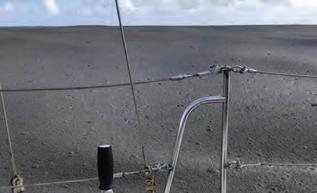
propagules [a vegetative structure that can become detached from a plant and give rise to a new plant] or introduce young corals to a damaged reef ecosystem is relatively new and untested.”
In quarrying, pumice is deposited on the surface of the earth in loose aggregate form and therefore blasting is unnecessary because it is unconsolidated and can be ripped up by dozers and excavator shovels. Scalping screens are used to filter the pumice from organic soils and unwanted rocks and crushers are used to achieve desired grades, including lump, coarse, intermediate, fine and extra fine.
As an end product, pumice has been employed for centuries in construction, medicine and the cosmetics industry. It is also used as an abrasive, especially in polishes, pencil erasers, and the production of stone-washed jeans. Pumice was also used in the early book making industry to prepare parchment paper and leather bindings. Today, there is still high demand for pumice, particularly for water filtration, chemical spill containment, cement manufacturing, horticulture and the pet industry. •

